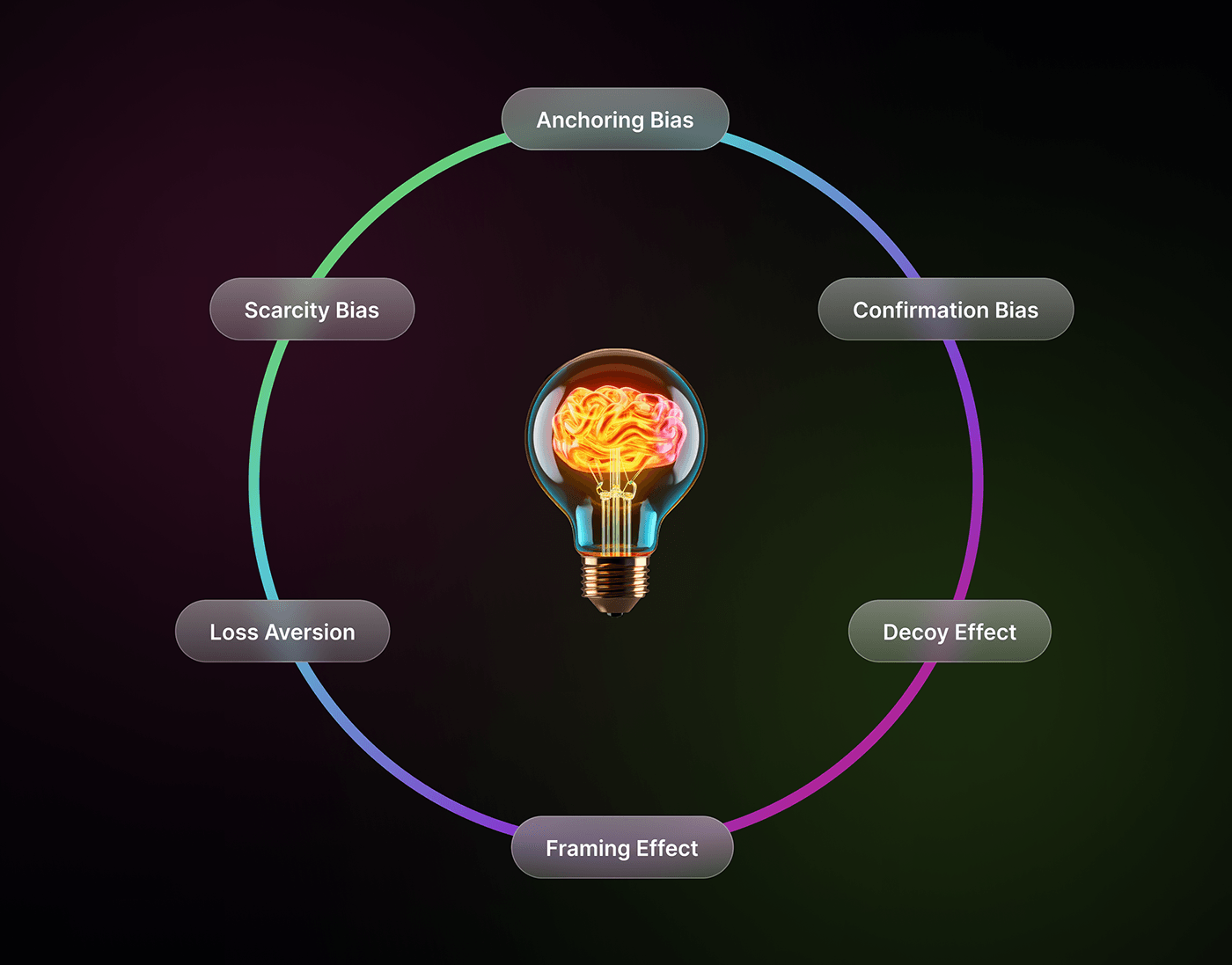
Cognitive biases are shortcuts that our brain uses to make quick decisions. These cognitive biases usually help us in many reasonable ways. However, they may lead us wrongly. This circumstance could happen due to human pattern observations. Without sufficient knowledge, human observation makes decisions that may be right or wrong in that context. By having the necessary knowledge about these biases, we can recognize them, not let them affect us, and make better decisions.

Let's explore some of the cognitive biases used here:
- Anchoring Bias: The first piece of information you hear tends to stick and influence your thoughts more than it should.
Confirmation Bias: You tend to notice and remember things that agree with your beliefs and ignore the rest.
Decoy Effect: The decoy effect occurs when a third, less attractive option makes one of the original two choices seem more attractive, influencing your decision.
Framing effect: This bias explains how the way information is presented can change how we see it, making the same fact seem better or worse just by how it's worded.
Loss Aversion: Loss aversion is about how we hate losing more than we love winning. This fear of losing can sometimes make us very cautious.
Scarcity bias: Scarcity bias makes us desire items more when they appear rare or in limited supply, driven by a fear of missing out.
In the following article, I will explore this case study further and examine the impact of cognitive biases on human behavior.
- Anchoring Bias: The first piece of information you hear tends to stick and influence your thoughts more than it should.
Confirmation Bias: You tend to notice and remember things that agree with your beliefs and ignore the rest.
Decoy Effect: The decoy effect occurs when a third, less attractive option makes one of the original two choices seem more attractive, influencing your decision.
Framing effect: This bias explains how the way information is presented can change how we see it, making the same fact seem better or worse just by how it's worded.
Loss Aversion: Loss aversion is about how we hate losing more than we love winning. This fear of losing can sometimes make us very cautious.
Scarcity bias: Scarcity bias makes us desire items more when they appear rare or in limited supply, driven by a fear of missing out.
In the following article, I will explore this case study further and examine the impact of cognitive biases on human behavior.

